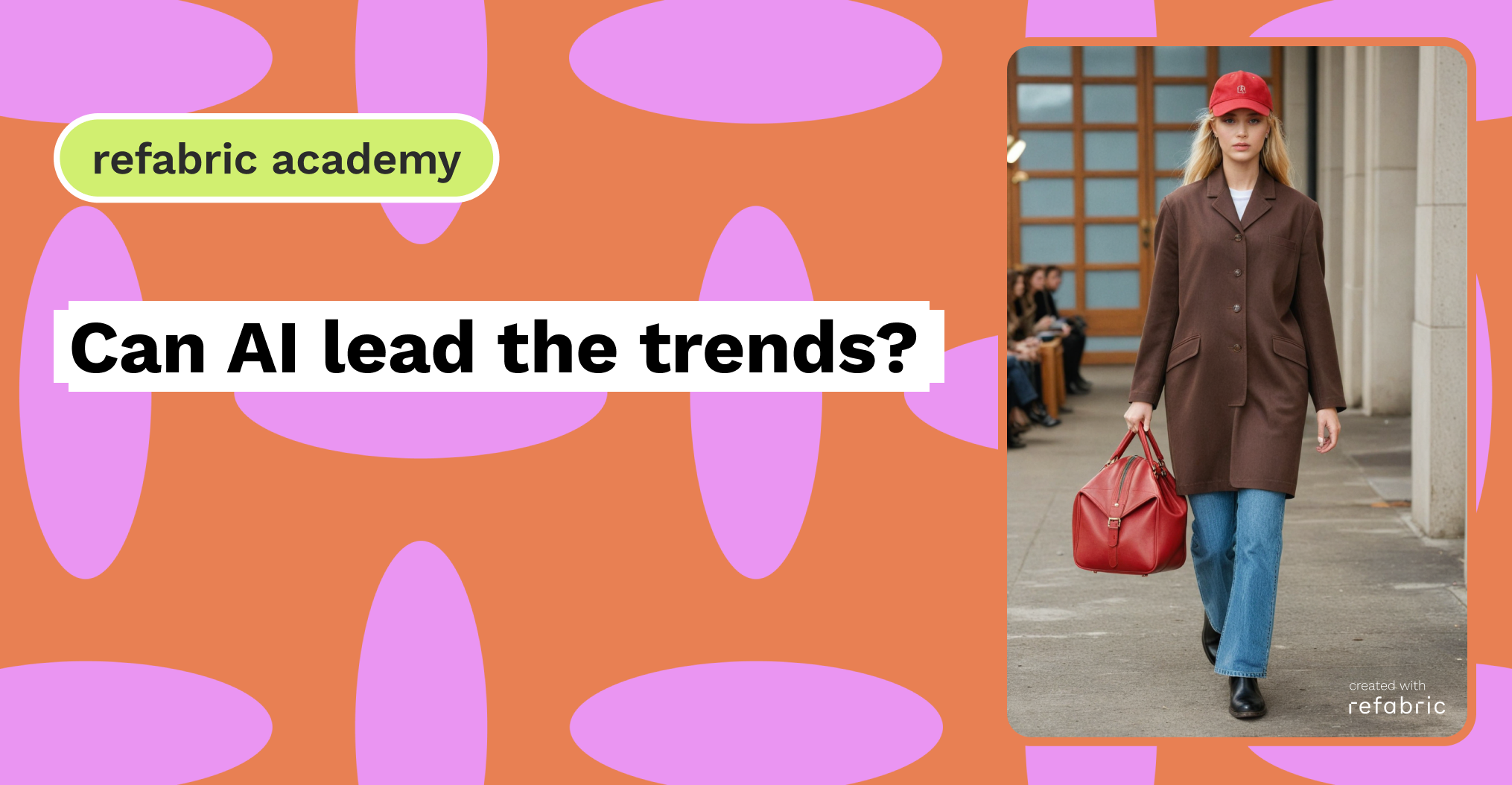AI, show us the way! Trends have long been envisioned by tastemakers worldwide, spanning across media, design, and entertainment realms. Nowadays, with new data-driven technologies, trends can be forecasted by AI. With that in mind, we ask: can AI lead the way in fashion by understanding customers on a deeper level?
With AI, following trends is like exploring a forest, with surprises like mushrooms and trees along the way. You might wander down new paths leading to rivers, mountains, and lakes you’ve never seen. AI guides you, ensuring you don’t get completely lost, but rather enjoy the adventure. Traditionally, streets have been where trends emerge, but the digital world adds extra excitement and variety.
On the other hand, fashion weeks have long ruled the fashion world, with designers creating clothes as a statement, magazines reporting the highlights of the week, and trends being identified through visual observation and intuition. However, this might change with AI, as it has made it easier to evaluate complex datasets and identify trends. In recent years, with the advancement of artificial intelligence technologies, forecasting organizations have increasingly relied on machine learning’s quantitative output for support. Large datasets consisting of social media postings, runway show photos, search engine results, and online and in-store sales data can all be analyzed by these artificial intelligence (AI) systems to find patterns. This ability can help forecasters identify new trends more quickly and accurately.

AI fashion forecasting can contribute to the carbon-neutral movement
There are many designs produced in the world, but not all are well-received by customers. These unlucky garments usually find their way to recycling areas or directly to landfills, creating a large carbon effect in the world as well as tons of waste. Through a deeper understanding of the consumer, AI trend forecasting can help bridge the gap between the designer and the consumer, thereby reducing fashion waste.
Forecasting is not magic, and it has never been
According to economist Ben Wubs and Regina Lee Blaszczyk’s book The Fashion Forecasters: A Hidden History of Colour and Trend Prediction, it is not a coincidence when all fast fashion brands produce similar styles at the same time during the same season. Even though the process of tastemaking appears intuitive, it has always been supported by numbers, data, and operations that analyze this information manually. Now, with AI forecasting, the process has become much more efficient and reflective of consumer sentiment.
AI is not a tool to be afraid of, but something to be excited about. It is only a continuation of what humans have been doing all along, leveraging their brains and other technological developments. Even in the ’70s, trend forecasting was a “thing,” but on a different scale, where forecasting was only possible with macro trends such as slouchy boots and flared pants. Now, AI has enabled trend forecasting across different levels with greater ease and speed.
